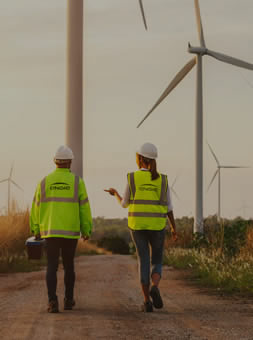Energy prices are volatile. However, if managed proactively, the volatility can be harnessed to create value. To balance the risk in volatility and optimize operational schedules, predictability is key. By understanding how and when businesses use electricity, we can empower customers to make the most of their energy usage patterns. A proactive approach not only mitigates exposure to volatile energy events but also reduces demand-related charges and overall energy costs.
Understanding how our customers operate
When collaborating with customers, we seek to understand how they consume energy in their operations. We learn about their processes, machinery, operational hours and materials and the energy patterns that correlate. This approach opens discussions about when and why they are unable to reduce their energy load which in turn helps us find operational flexibility, even where they may have thought none existed.
In the past, energy was seen as a simply a commodity where the lowest bidder or price wins. But as we move towards decarbonization and start using tools, technology, and flexibility, we can evolve that mindset and consider exactly when and how we use energy. We can then understand the most efficient ways of sourcing energy, as well as whether our equipment is responsive and flexible in the energy it needs to operate.
The importance of making your energy supply more predictable
Traditional demand response programs can fall short in addressing the complexities of modern operations and are designed to address short-term unpredicted issues at the grid level. However, itis important to consider a demand response program that also considers market events. So, whether demand is weather-driven or due to issues with power generation, customers can preemptively avoid many volatile events to save on energy consumption.
This is particularly beneficial for complex operations such as chemical plants or multi-building college campuses. The typical 10 to 30-minute notice provided by traditional demand response programs may not provide sufficient time for these entities to react due to complexity issues, health and safety concerns, and potential equipment damage. By extending to a full day’s notice, we open the flexibility market beyond existing constrained demand response programs.
The economic benefit for customers
Energy flexibility is not just a technical capability but a strategic asset that can unlock significant financial as well as environmental value for customers. By quantifying the economic benefits of flexibility on a per MW basis, they will receive tangible rewards for proactive energy management. Furthermore, this dollar value can be offered as a direct payment, a bill credit, or even converted into Renewable Energy Certificates (RECs).
The ability to swap flexibility for RECs presents hidden value for customers who may not have been able to pay for them outright or budgeted. In other words, if a customer can reduce their loads based on prediction and only call for a set amount of time and energy, the savings can convert into a green product or a REC.
Harnessing energy flexibility for strategic advantage
Proactive management of energy use patterns is essential for our customers. The right tools and knowledge to manage energy proactively can turn volatility into value, and we can help mitigate risks, reduce costs, and enhance operational efficiency.
By unlocking the hidden value in energy use patterns, customers can achieve their business objectives while contributing to a decarbonized future.



